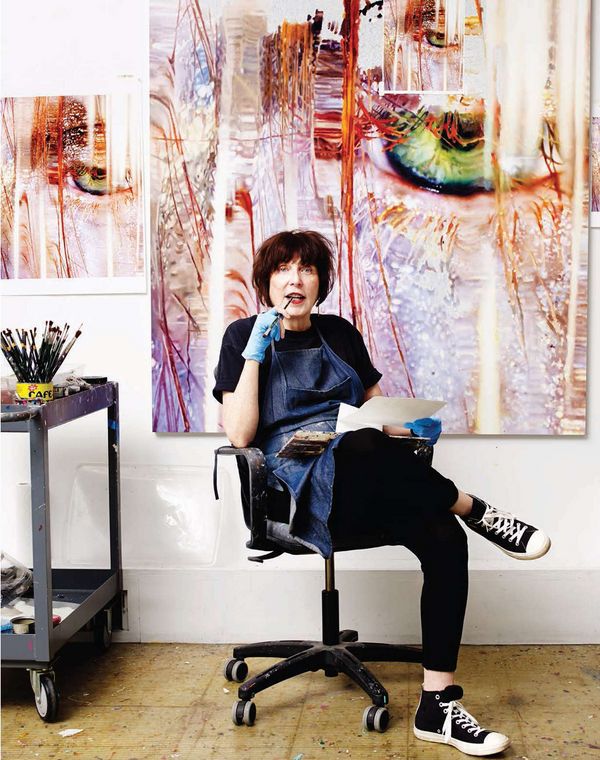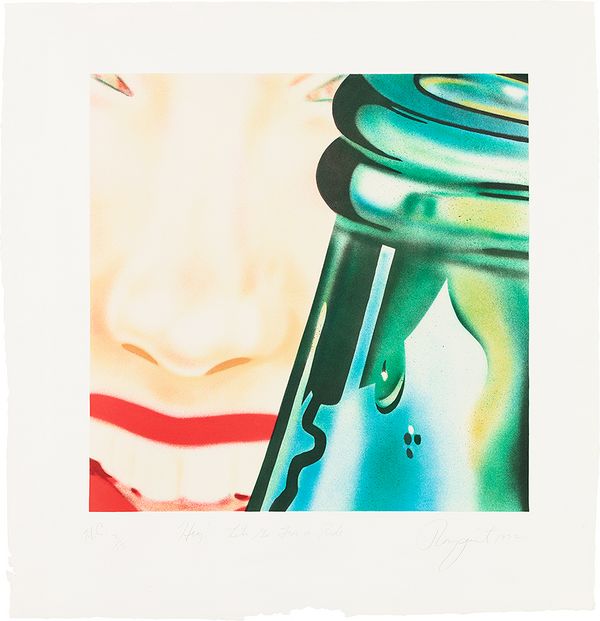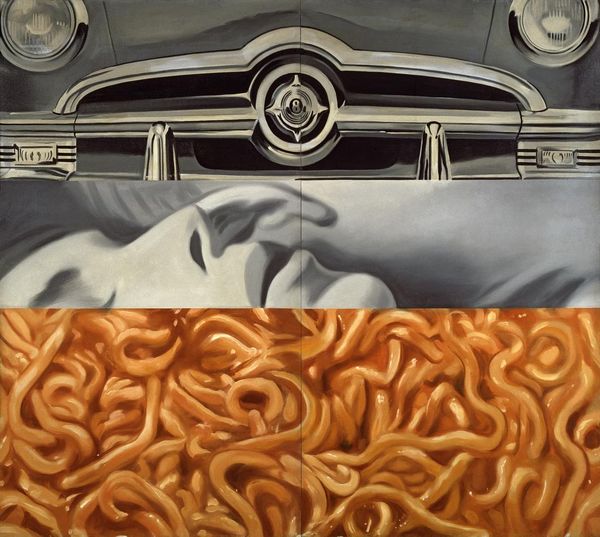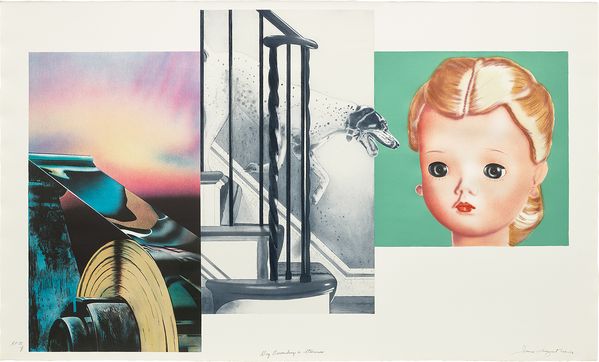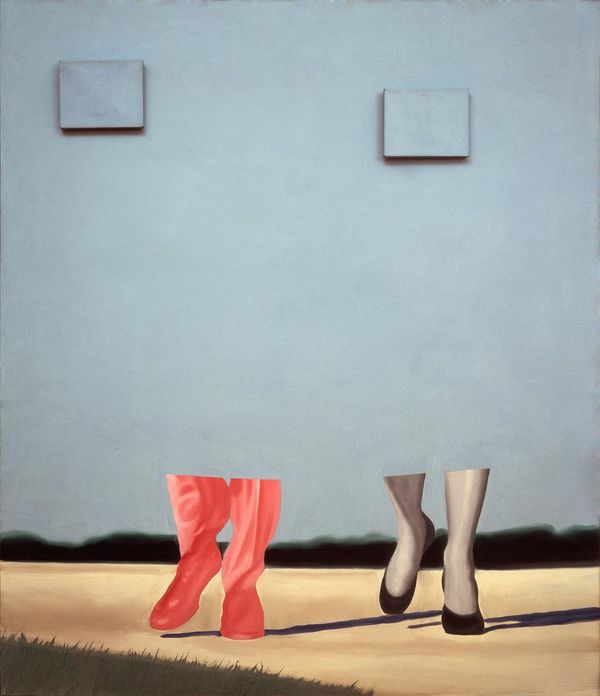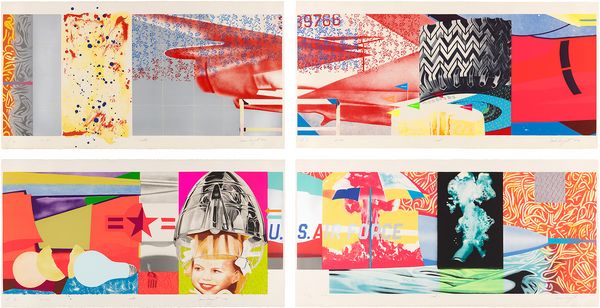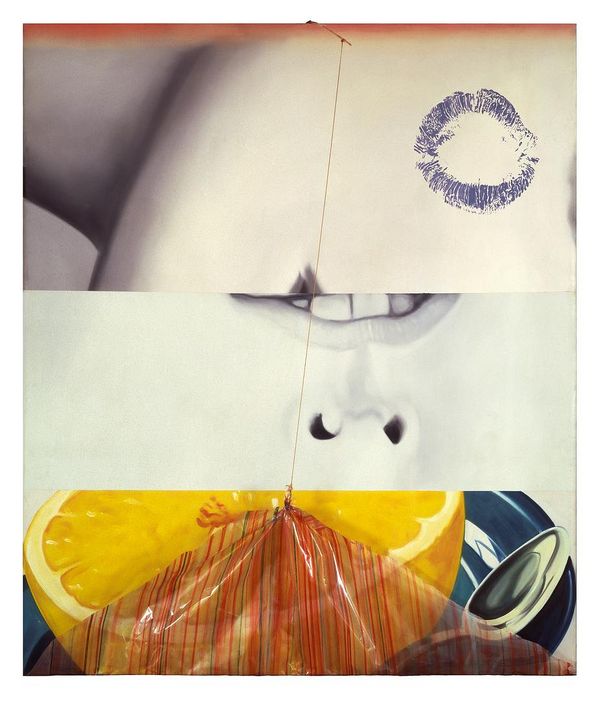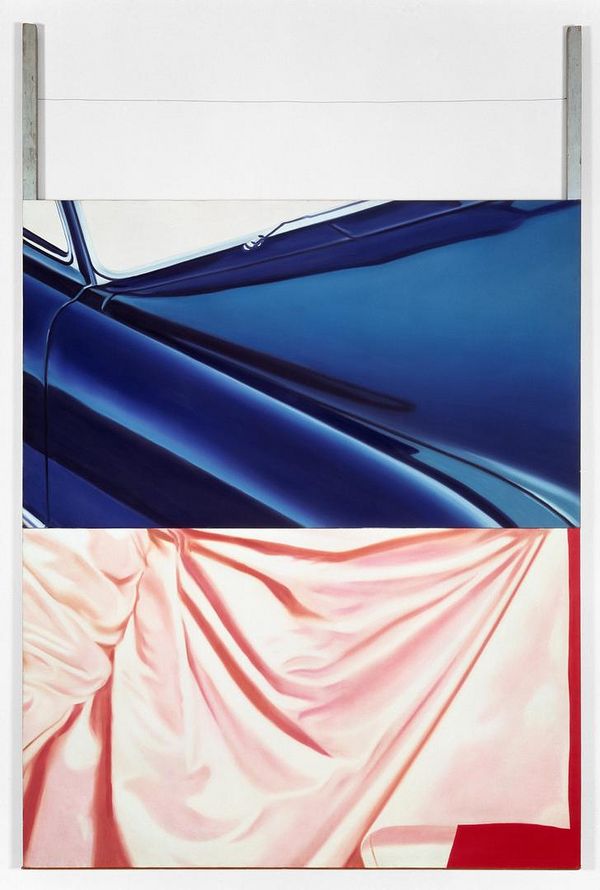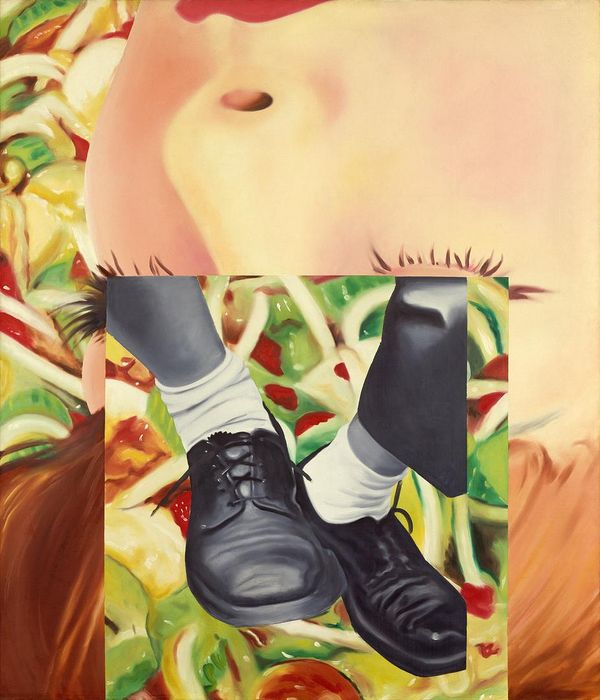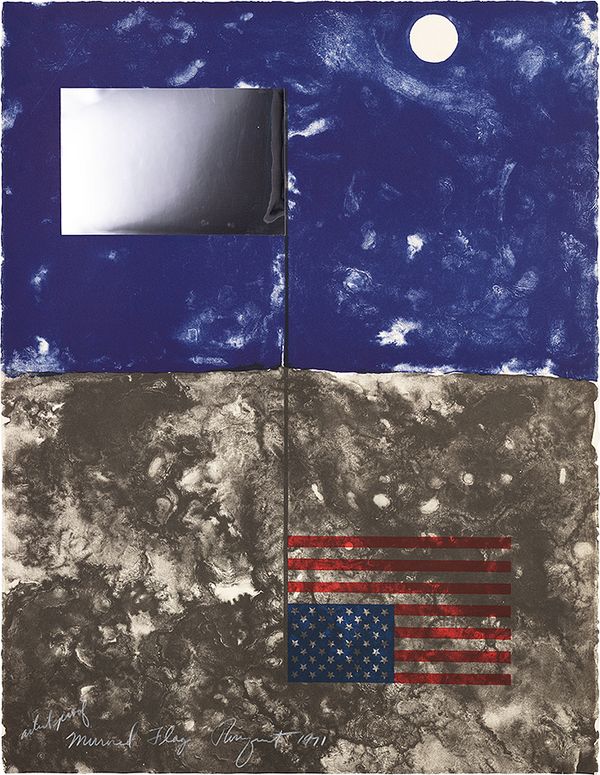Portrait of Marilyn Minter by Nadya Wasylko. Courtesy of the artist.
Marilyn Minter’s alluring works depicting the female body — often behind steamy or obscured glass — have resonated powerfully in a post-#MeToo, post-Roe cultural landscape. New York Times art critic Roberta Smith has noted that her “images possess a disorienting doubleness that forces you to examine them with extra care.” Perhaps the same notion could be put forth for the work of James Rosenquist, an artist Minter views as crucial to her own path.
Below, Philae Knight — Client Advisory Director at Phillips and longtime devotee of both artists — speaks with Minter about Rosenquist ahead of the Phillips auction Works from the Estate of James Rosenquist on 15 February in New York.
James Rosenquist, Hey! Let's Go for a Ride, 1972. Works from the James Rosenquist Estate.
Marilyn Minter, Simmer, 2015. Courtesy of the Artist.
PHILAE KNIGHT: Marilyn, we want to know what you think about James Rosenquist and what he meant to you.
MARILYN MINTER: When I was growing up in Florida and I saw James Rosenquist in art magazines that showed him doing billboards in Times Square, I thought, “Wow, I could probably do that too.” Because I could draw. And I thought, it’s really hard to do something fresh with drawing. Even back then, I knew there was no appetite for what I could do because Abstract Expressionism kind of ruled the art world at that point. At the time, Pop Art was just coming into favor in the New York art world — it was just entering the vernacular. And where I was at the University of Florida, which was deeply convinced that AbEx was the only way to be an artist, Pop Art was a slap in their face. They hated Pop Art, hated Warhol, and they hated Rosenquist. So, I was an outlier immediately because I loved it right away. And so I thought maybe there is a place where I can figure out a way to use my skills to make art. Because they were just so devalued where I was.
And I understood where they were coming from. We had like a thousand years of working from imagery or working from realism, then to have Jackson Pollock throw pots of paint on a piece of canvas — that was such a fresh vision! But I thought this other direction was more interesting because it was about the culture. I was interested in making art about the culture and that’s what James Rosenquist was doing. So he spoke to me.
PK: Are there any works of his that stand out for you?
MM: I was just looking through the catalog from his 1986 show at the Whitney. I must have looked at this catalogue a hundred times! I just think it’s brilliant.
I mean just look at this:
James Rosenquist, I Love You with My Ford, 1961.
MM: And this was way before David Salle!
PK: Yeah.
MM: But you know, just the brilliance of his composition and the way he charted the eye. How do you make work like this in the ‘60s when AbEx was the ruling force? And I think it really was going right to pop culture. And it wasn’t just pop culture, it was culture. That was such a slap in the face to these true AbEx believers. Nobody had thrown culture in the face of what high art was before and that just totally spoke to me. I was also drawn to Rosenquist’s early work using combines. I mean, he just had so many ideas! His compositions are glorious. I do not understand why he’s not considered a much more important artist.
PK: Absolutely.
MM: Just looking through his work again, I feel like David Salle took all these ideas and when he did it, people could see it. For some reason they couldn’t see it back then when Rosenquist did it.
James Rosenquist, Dog Descending a Staircase, 1980–82. Works from the James Rosenquist Estate.
PK: So you mention David Salle and his reverence — I almost want to say mimicry — of Rosenquist in a lot of ways. But how do you feel about young artists, this next generation, that are looking to you?
MM: Oh, I think it’s their job to steal — that’s their job. I totally believe in that. I stole from Rosenquist. I stole from everybody! [They both laugh.]
PK: There’s a real similarity to Rosenquist’s reverie of the feminine in your work.
MM: Absolutely! Just look at these cutouts:
James Rosenquist, Untitled (Blue Sky), 1962.
MM: This is a normal thing to do in a painting now but was unheard of back then. Just the brilliance of having these cutouts going for the rest of the body — only having these pink feet and these high-heeled ladies’ shoes. There’s such brilliance in his placement. And also, he was very anti-war you know. I was a big-time activist, and F-111 really spoke to me. I mean there’s Guernica, there’s F-111, and there’s Goya. That’s it! [Laughs.]
PK: You’re absolutely right.
James Rosenquist, F-111 (south) (west) (north) (east), 1974. Works from the James Rosenquist Estate.
MM: And just look at this one. The collage, the piece of plastic, and just showing a kiss.
James Rosenquist, Morning Sun, 1963.
PK: I know. It’s so tender. The other thing that strikes me is his technique of painting as a photorealist, and then dissecting it.
MM: Yeah.
PK: From a distance you see the image, but the lines are all blurred.
MM: Oh yeah, I mean look at how abstract this is:
James Rosenquist, Outside, 1963.
MM: How gorgeous is that? This is the painting I saw when I was in school and I went, “Oh my god, that’s the best painting I’ve ever seen.” And look at this:
James Rosenquist, The Promenade of Merce Cunningham, 1963.
MM: He just put another image right on top of this face. I mean, this is David Salle 101. All my hats off to David Salle. He took Rosenquist and somehow he made it so people could see Rosenquist. Maybe Rosenquist was just ahead of his time and when David did it, people were ready to see it.
“It just blows my mind — his ideas, his playfulness.”
—Marilyn Minter on James Rosenquist
PK: Did you ever meet Rosenquist? Were you ever in the same place at the same time?
MM: Once I met him in Basel, when I was speaking right after him with Richard Flood. And I did this kind of “I’m not worthy!” move. [She mimes a worshiping motion]. He sort of shrugged it off like, “Oh stop that!” [Laughs]. But that’s how I felt! And you know I was surprised; how did Cary [Leibowitz, Phillips' Worldwide Co-Head of Editions] know? I don’t know how Cary knows how much I like Rosenquist.
PK: I also don’t know how he knew that you and I are friends!
MM: Oh, and look at this one:
James Rosenquist, Lanai, 1964.
MM: This was done with a paint roller here. Do you remember you could roll a pattern on a wall, so it looked like you had wallpaper? A million artists used this later — this is a precursor to Christopher Wool. And then just taking all the images and piling them on top of one another and changing their colors… mind boggling!
PK: Cary mentioned to me that Rosenquist was like a god to you when you were young. Is this true?
MM: Oh yeah! God. I worshipped him. It comes back to the question of how do you work with realism in a fresh way? And I’m trying to do that, so I was watching him, and he blew my socks off. I often work with frozen or steamed glass. It’s a way to distort the image so it’s not a narrative and so it’s not an illustration. Rosenquist did that at the end of his life where he just cut up an image into these layers. So, we see the images, but maybe they look kind of scratched.
PK: I just love that and the whole idea that if you layer something with blur, it reveals an authentic clarity.
MM: Yes. I think it changes the meaning. And then of course, I mean nobody else had put a corner of Mylar to reflect an image before he did it. No one. And now you see it all the time, you know? I don’t know what else to tell you. I wish he would get a retrospective right now.
James Rosenquist, Horse Blinders, 1968–69. Collection of the Museum Ludwig, Cologne, Ludwig Donation, 1976.
James Rosenquist, Mirrored Flag from Cold Light Suite, 1971. Works from the James Rosenquist Estate.
